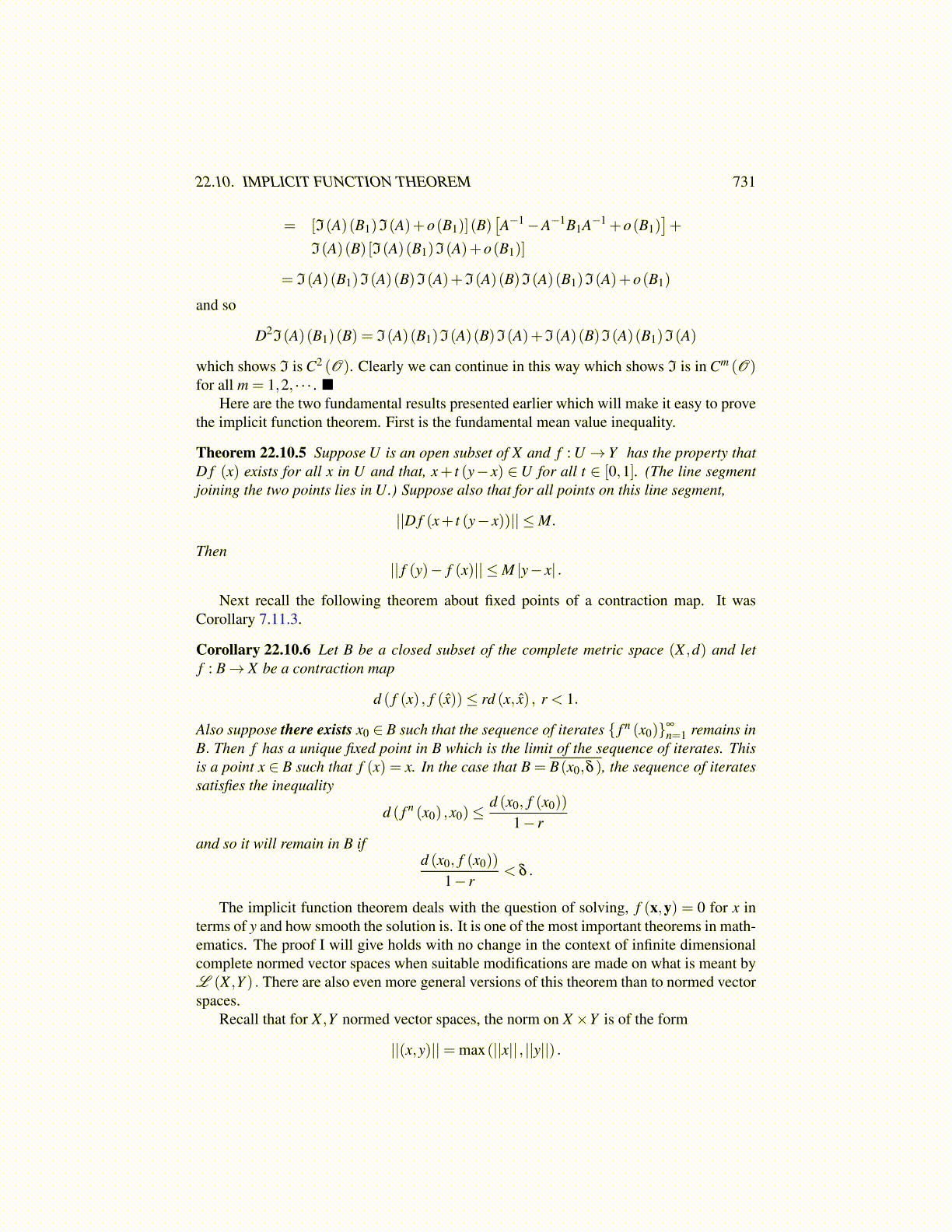
22.10. IMPLICIT FUNCTION THEOREM 731
= [I(A)(B1)I(A)+o(B1)] (B)[A−1−A−1B1A−1 +o(B1)
]+
I(A)(B) [I(A)(B1)I(A)+o(B1)]
= I(A)(B1)I(A)(B)I(A)+I(A)(B)I(A)(B1)I(A)+o(B1)
and so
D2I(A)(B1)(B) = I(A)(B1)I(A)(B)I(A)+I(A)(B)I(A)(B1)I(A)
which shows I is C2 (O). Clearly we can continue in this way which shows I is in Cm (O)for all m = 1,2, · · · .
Here are the two fundamental results presented earlier which will make it easy to provethe implicit function theorem. First is the fundamental mean value inequality.
Theorem 22.10.5 Suppose U is an open subset of X and f : U → Y has the property thatD f (x) exists for all x in U and that, x+ t (y− x) ∈U for all t ∈ [0,1]. (The line segmentjoining the two points lies in U.) Suppose also that for all points on this line segment,
||D f (x+ t (y− x))|| ≤M.
Then|| f (y)− f (x)|| ≤M |y− x| .
Next recall the following theorem about fixed points of a contraction map. It wasCorollary 7.11.3.
Corollary 22.10.6 Let B be a closed subset of the complete metric space (X ,d) and letf : B→ X be a contraction map
d ( f (x) , f (x̂))≤ rd (x, x̂) , r < 1.
Also suppose there exists x0 ∈ B such that the sequence of iterates { f n (x0)}∞
n=1 remains inB. Then f has a unique fixed point in B which is the limit of the sequence of iterates. Thisis a point x ∈ B such that f (x) = x. In the case that B = B(x0,δ ), the sequence of iteratessatisfies the inequality
d ( f n (x0) ,x0)≤d (x0, f (x0))
1− rand so it will remain in B if
d (x0, f (x0))
1− r< δ .
The implicit function theorem deals with the question of solving, f (x,y) = 0 for x interms of y and how smooth the solution is. It is one of the most important theorems in math-ematics. The proof I will give holds with no change in the context of infinite dimensionalcomplete normed vector spaces when suitable modifications are made on what is meant byL (X ,Y ) . There are also even more general versions of this theorem than to normed vectorspaces.
Recall that for X ,Y normed vector spaces, the norm on X×Y is of the form
||(x,y)||= max(||x|| , ||y||) .